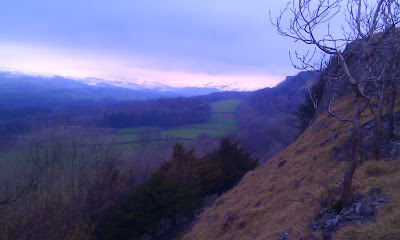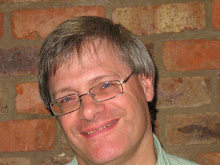We may not get to have John to stay for an extended break with us again, so here are some of what he got up to when he was home in the summer of 2011.
He worked hard:-
He painted the piano room walls, three cream and one green.
For two or three days, as work was available, he worked at packing goods in a warehouse down by the docks.
He cleaned a house between tenancies, and disassembled a reassembled a wardrobe.
With his friend Pete, he trimmed the branches of the cherry blossom tree in the front garden.
They lifted and re-laid the paving flags in the front of the house, making it all look much neater.
They spent a marvellous Sunday evening having a bonfire on the front drive, burning the branches cut from the tree, sitting on the garden chairs eating their chips. It looked great. A week or two later some local youth followed their example and built fires in Smithdown Road, but they were inspired by events in London rather than our front drive.
He played hard:-
He played some games of tennis; he got around the place by cycling.
He played ultimate frisbee with the lads on Mark's stag weekend. His general level of fitness did not serve him well, but he did not give an inch, and played hard so as to not let his friends down.
We played frisbee in Newsham Park with Scott Dan Nathan Dave & Lu while Anna and Rachel sat and chatted.
We played many fast and furious games of Settlers of Catan. He was generous at teaching us the game and pointing out good tactics. He introduced several people to the game. (Several friends were made to play - they given no option!) Special thanks to Amber for sending the game from America.
We played one game of Carcassonne.
After a great Sunday lunch with friends, with 13 people round the table, all but two stayed put for a great game of Zilch. Amazingly, I won that.
He appreciated and made music:-
When Kim arrived six of us went to the Philharmonic Hall for a program of
Gershwin Music. and later on four of us went to see
Serita Cheeks in Manchester. Serita came to stay for a couple of days and and they visited the Beatles museum as well as some other sights.
John got drawn into the Worship team at church playing keys for a couple of different worship leaders, where he seemed to fit in very well.
Towards the end of his time John arranged a couple of piano recitals at a friends house, playing Mozart and Chopin. It was part fund raising for university fees and part a way of saying goodbye to folks. It was also a good challenge getting pieces up to performance standard. We enjoyed two great evenings with about 15 folk, and another Sunday afternoon with six of us. It is lovely hearing him play at home but was very special hearing him perform.
Climbing through windows.
One day he managed to get locked out of two houses on three separate occasions. His own keys to our house, and those to the house he was working in, were locked inside. Before climbing in through a first floor window, he fetched a stepladder from our house, climbing through a window to get at it. All of this was after being rescued once, when the outgoing tenant turned up to hand in a set of keys at a very opportune moment.
We watched some films:-
On John's first evening we watched The Bourme Identity. (Actually I think I was out that night). During the stay we watched the Bourne Supremacy. Then on his last night, we watched the Bourne Ultimatum. Thanks to Nathan for lending it.
We watched Invictus and the secret life of bees, and probably some others as well.
John passed his driving test.
Well done John, and well done his teacher
Judith Pegram. She managed to replace the bad habits he had picked up from me. He went on the car insurance for seven days, and he took Ann for a day out in Southport, and got his first motorway experience when we picked up Anna from Sheffield. Visitors got a lift home each night and when I got in the car the next morning I found music I did mot know I had on my iPod.
Enjoying the Hostelry.
The three Pendray men managed one brief visit to a local pub, where John drank cider, his choice of drink after nine moths of being tee-total, being too young to drink legally in America. His favourite meal with us was probably the evening with Kim at the
Bay Horse at Arkholme, but his best evening was with Kim at Ego restaurant and afters at the Panoramic Restaurant in Liverpool.
We saw lots of countryside.
We took Kim to Llandudno before Anna went to Romania, spending a lazy afternoon on the west shore and going round Conwy castle before fish and chips at Rhos and viewing the sunset from the beach at Colwyn Bay.
We visited Skelghyll falls at Ambleside, and Aira Force by Ullswater, with great views of Windermere Troutbeck and and Kirkstone. We stayed near the Lune valley and visited Kendal castle, with Kim. Another time John and I had a great picnic on Scout scar overlooking the Lyth valley.
We went sailing.
David Kim John and I had a morning at Killington before going onto a picnic by the river Kent at Kendal, and John and I had two sessions on Ullswater while Ann enjoyed the view from the sailing centre at Glenridding. It was a nice force 2 both days, and John got the hang of helming quite well.
John got a US Visa.
There was quite a lot of emailing back and forth, getting the right papers and letters to his college before they could issue the form he needed to apply for the visa. Then came the cheap but uncomfortable coach ride to London, just on the night the riots became widespread. By nine in the morning he had visited the US embassy and did his sightseeing bit round London.
Uncles and Aunts.
We took Kim to London and had a meal in Amersham with the other Pendrays. Only Katy and Anna were missing, both on the same Romania trip. John and Kim also had a meal with Carol & Jim in Hoylake. Giving them a lift (it was before John had passed his test) I caught up with some friends in West Kirkby, and it seemed a very pleasant atmosphere when I called to pick them up. On the way back we called on John's former piano teacher, who was very pleased to make contact again.
Parties in the rain.
After thunder and lightening the evening before, and heavy showers during the morning, we spilled out after Mark & Zoya's wedding into a pleasant afternoon milling amongst the guests with music from the Cello and Saxaphone of Ian & Lucy, before making our way to the reception where the bride sang accompanied by Chris Horn's jazz band.
The worst rain was one Sunday when various choirs and groups were performing at the bandstand to a small but dedicated and bedraggled group of onlookers. It was not all rain. I did stroll out one afternoon and and join the tail end of a very pleasant picnic in Sefton Park.
London
John and Kim joined us for lunch in the cafeteria of the National Museum by Trafalgar square. While we had visited the Courtauld gallery at Somerset House, they viewed London from a height at the London Eye. In the afternoon we went to Liberty while they went to Hyde Park.
We bumped into a Nivea promotion at Euston station, and John got photographed as a potential model. I got given a free sample as well, but they never took my photo.
Anything else?
Well I have to say I was disappointed that so many of the Pringles I bought got devoured in a "How many Pringles can you eat at once?" competition. But whatever I thought we will probably remember the evening that Chris came to visit.
Really, anything else?
Oh Yes. He popped the question and Kim said Yes. Kim and John are engaged. How exciting is that?








































